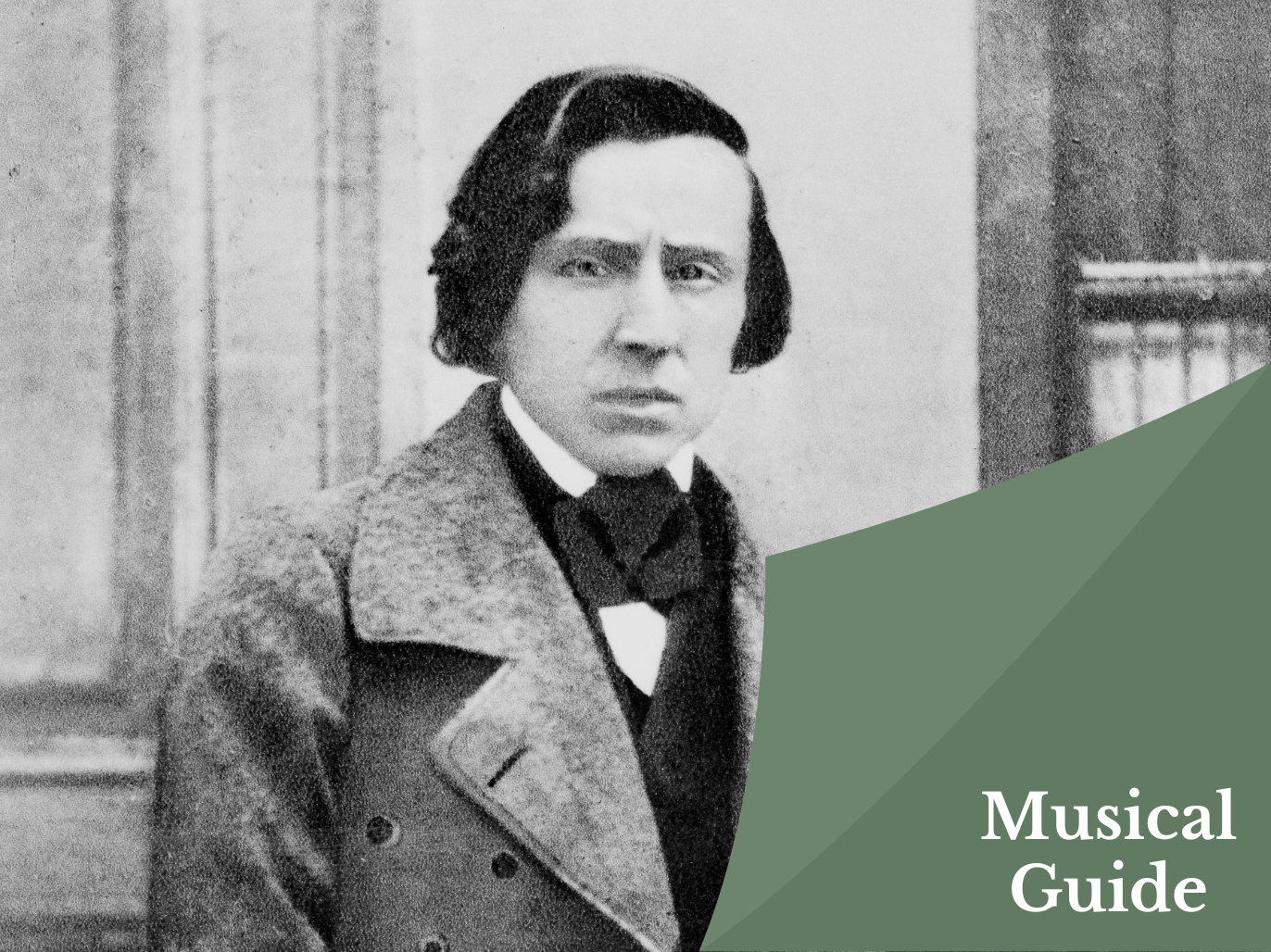Chopin’s arrival in Paris in Autumn 1831 sounds much like the start of a coming-of-age novel. A young 21-year-old composer—motivated to perfect his art and be recognized internationally—opens the doors of the capital to embrace Romanticism and its worthy representatives. However, this wasn’t the case. Chopin’s name was already beginning to circulate among European critics and musicians after he had won over his native land, the Kingdom of Poland, and performed a series of sold-out concerts in Prague, Dresden, and Vienna. His early works—Piano Concertos No. 1, Op. 11, and No. 2, Op. 21, Nocturne in C-sharp Minor, Op. 20, etc.—were already impressively mature. A superstar in his own country, a shooting star in Europe, and a rising star in Paris, Chopin’s fabled entry into the ranks of the greats was nevertheless marked by a terrible loss. His native Poland had fallen in Warsaw following a failed attempt at insurrection against the Russian Empire. This did not prevent our composer from pursuing his Parisian odyssey.
View author's page
Reading time estimated : 10 min
27 Boulevard Poissonnière: a modest but well-located first home
October 1831. Chopin observes the landscape of Paris from the balcony of his apartment, located on the 5th floor of 27 Boulevard Poissonnière. In a letter to his friend Kumelski on 18 November 1831, the composer praised the qualities of his two-room apartment, which offered a breathtaking view of the capital: “I have a small room with delightful mahogany furniture and a balcony overlooking the boulevards, from which I can see Paris from Montmartre to the Panthéon and, all along it, this beautiful world.” A lively city where people are on first-name terms and mingle freely, where you go out with empty pockets despite the latest fashionable gloves. A small, chic, and trendy theatre where wealth and poverty walk hand in hand to the sound of Shakespearean bells: “Cries, noise, din, and mud, past anything you can imagine,” writes Chopin. And yet, it is this mixture of worldliness and frivolity that seems to appeal to the composer, convinced that he is at the beating heart of the musical city. Located near major artistic venues—the Théâtre des Italiens (now Théâtre National de l’Opéra-Comique) and the Salle Le Peletier, the former stronghold of the Paris Opera until 1873—this small unit offered Chopin a strategic location for keeping up with musical developments.
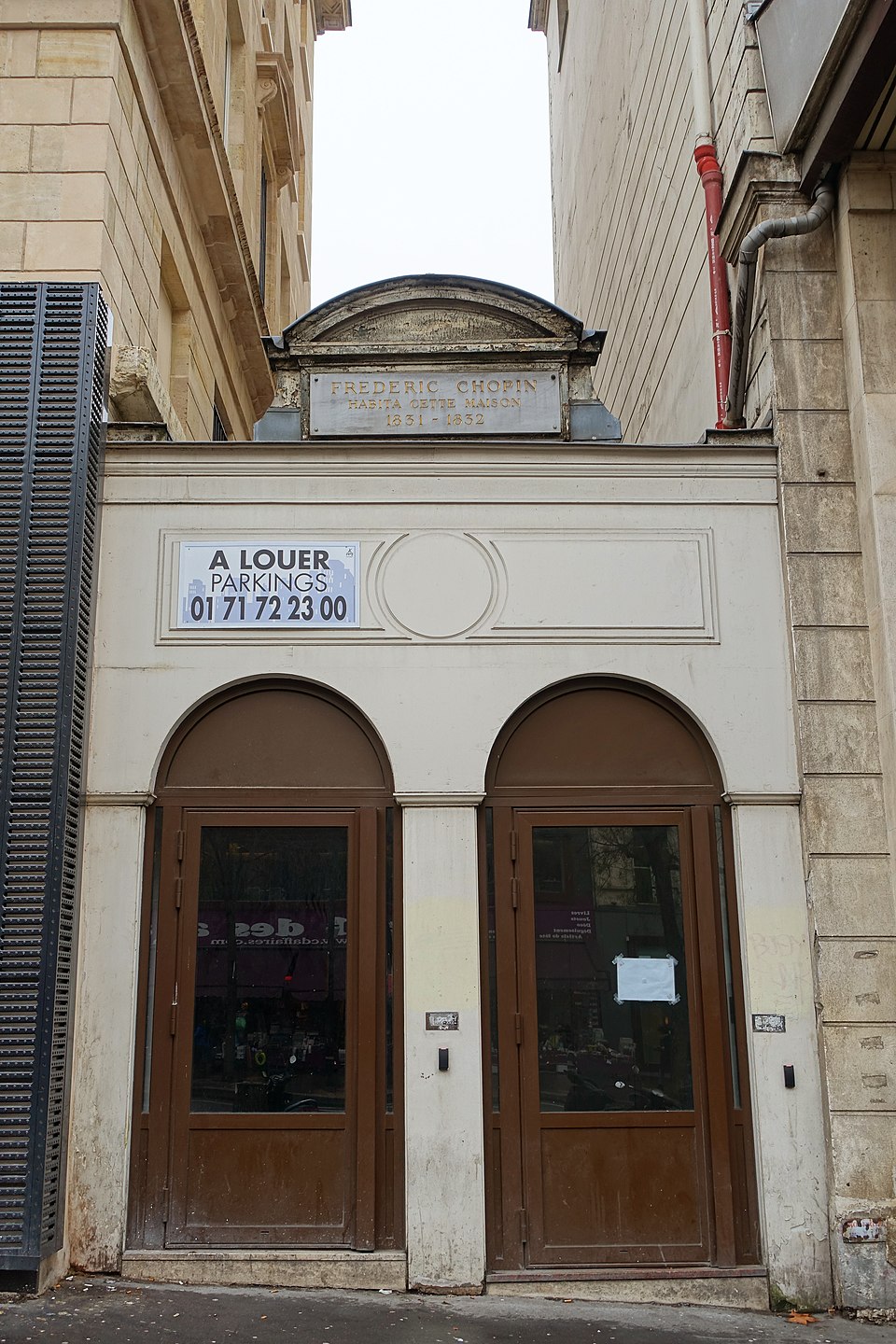
Hôtel Cromot du Bourg: a springboard into Parisian musical society
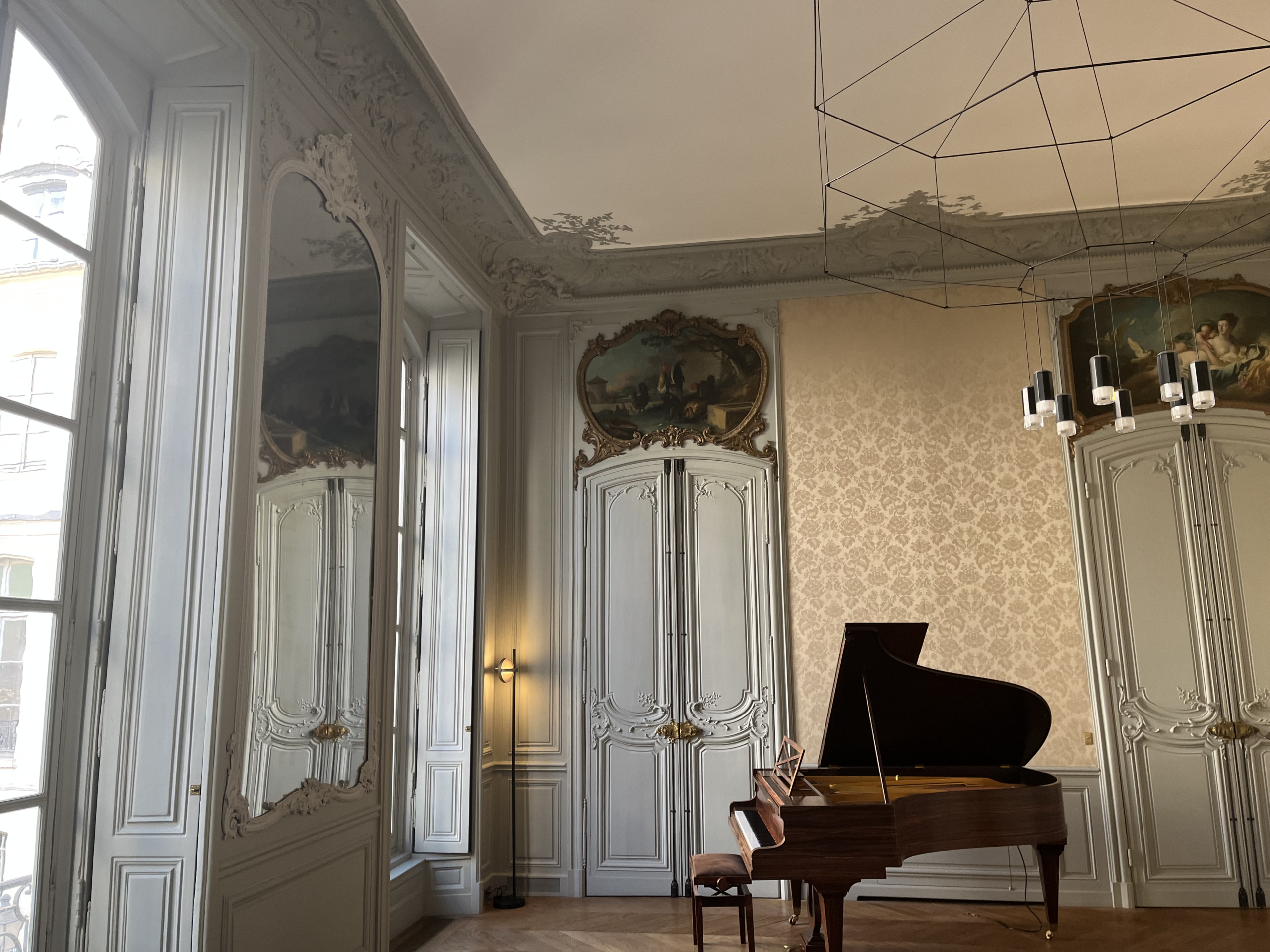
That same year, Frédéric Chopin made a pivotal encounter. He met an extremely influential German pianist whom he greatly admired: Friedrich W. Kalkbrenner. Initially seeing him as a potential mentor, Chopin then changed his mind, but still managed to obtain Kalkbrenner’s help in accessing a small concert hall recently set up in a private mansion: the Hôtel Cromot du Bourg, located at 9 rue Cadet in the 9th arrondissement. This was a concert hall run by none other than Camille Pleyel, son of the founder of the famous Pleyel pianos and a piano maker himself. He suggested that the composer put his flawless phrasing to good use on their instruments, thus enabling Chopin to flourish among the world’s greatest musicians. On 26 February 1832, Frédéric Chopin performed in public for the first time in Paris, playing—among other compositions—one that had earned him high praise from Robert Schumann a year earlier: Variations on ‘Là ci darem la mano’ Op. 2, from Mozart’s Don Giovanni.
Yunchan Lim performs Frédéric Chopin’s Variations on “Là ci darem la mano”, Op. 2
The first performance was met with great enthusiasm from the audience, including a certain Franz Liszt: “We remember his first appearance at the Salons Pleyel, where even the most thunderous applause seemed insufficient to express our delight at this talent, which revealed a new phase in poetic sentiment and such happy innovation in the form of his art.”
Considered the ‘first Salon Pleyel’—another salon would open later at 22 rue Rochechouart in 1839—the Hôtel Cromot du Bourg became one of the key venues for Chopin’s performances. As a loyal ambassador for the Pleyel brand, he swore by their pianos, which you can still see today.
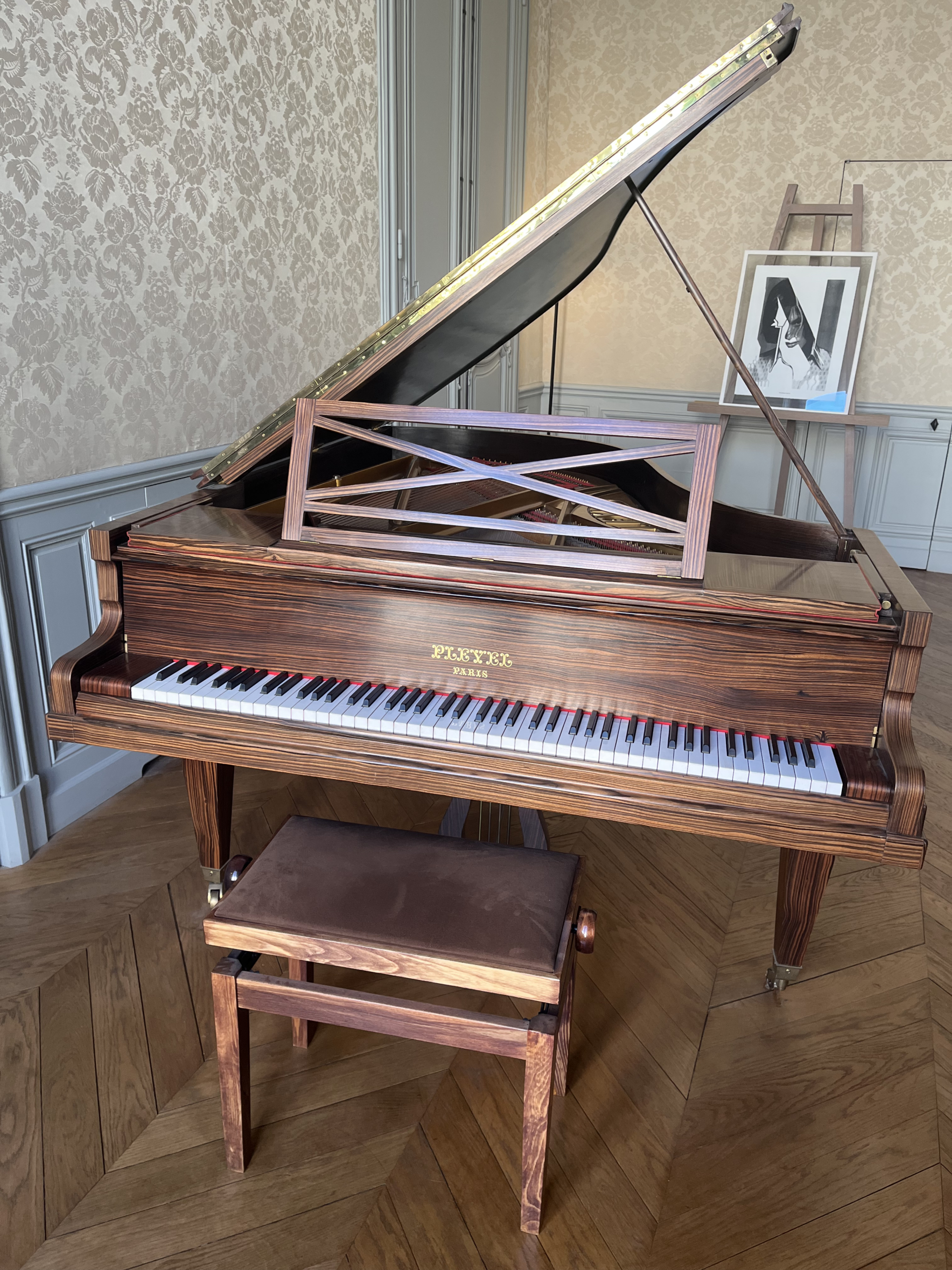
5 Square d’Orléans: an affluent apartment dedicated to teaching… and matters of the heart
A composer and illustrious pianist, Chopin was also a brilliant teacher. In addition to the concerts he gave in Parisian salons, he made piano lessons his main source of income. Chopin began teaching in the mid-1830s, making use of his newly acquired, more spacious, and suitable home at No. 5 Chaussée d’Antin to fully exercise his role as a teacher. However, it was not until the 1840s, and more specifically at 5 Square d’Orléans in the Nouvelle Athènes neighbourhood, that Chopin acquired—according to musicologist Jean-Jacques Eigeldinger—his aura as a “grand master of the piano.”
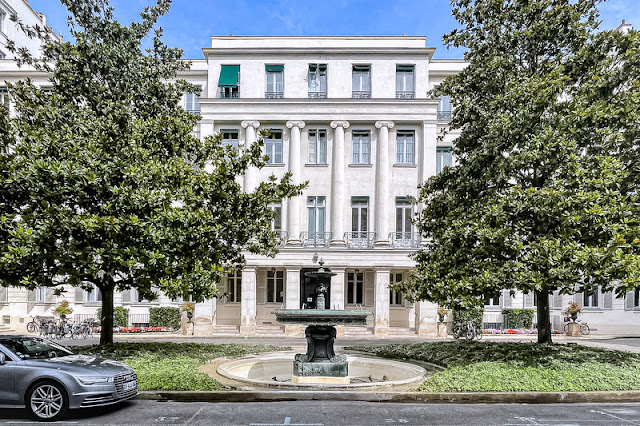
This opulent and affluent apartment had the distinction of housing not one, but two pianos: a grand piano and an upright piano, both made by Pleyel, allowing Chopin to accompany his students. A place of living and teaching that also served as a salon, Chopin took advantage of his own artistic and social renown to promote his most brilliant pupils. Jane Stirling, Karol Mikuli, and Marcelina Czartoryska, to name a few, performed at musical evenings organized by the master, playing—among other works—his Piano Concerto No. 1.
Nikolai Demidenko plays Chopin’s Piano Concerto No. 1
One place can hide another, and this apartment allowed Chopin to be physically closer to his lover, George Sand, who lived in the same building as him, but one floor above. Their cohabitation reflected their relationship. Having met in Paris in 1836 thanks to another secret couple, Marie d’Agoult and Franz Liszt, George Sand formed a discreet but passionate relationship with Chopin, taking advantage of seasonal retreats in Majorca and Nohant to meet up and correspond by letter. It was not until 1842 that the two lovers were reunited at this same address, before separating definitively between 1846 and 1847.
‘Salons Pleyel’, 22 rue Rochechouart: Chopin’s farewell to Paris
February 1848. Chopin prepares to perform his final concert in the capital. The idea did not come from him, but from his friends, who made a few adjustments to the Salon Pleyel so that the composer would feel ‘at home’: “Pleyel, who always teases me about my foolishness, is going to encourage me to play by decorating the staircase with flowers. I will feel almost at home and my eyes will meet mostly friendly faces,” he wrote to his family. Far from his native Poland, ravaged by tuberculosis, and separated from his great love, George Sand, a weakened and anxious Chopin had to perform on stage, aware that 300 people would be drinking in his every note.
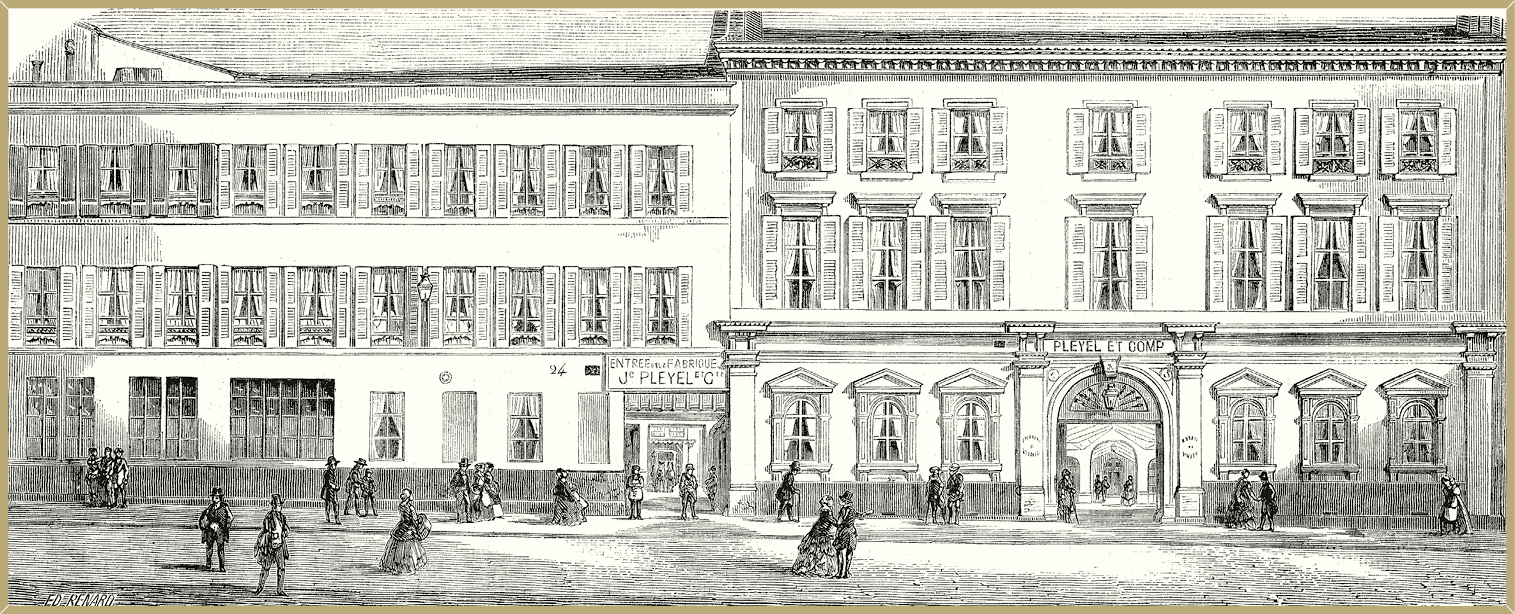
He shortened some of his works that were not yet popular at the time: his Cello Sonata, Op. 65, was thus stripped of its allegro. This did not prevent him from being crowned with glory, as Chopin also gave the audience a few of his recent compositions—the Barcarolle, Op. 60, the Minute Waltz known as the “Petit Chien”, a few mazurkas, preludes and études—without forgetting to pay tribute to his idols with a performance of Mozart’s Trio K. 542 and a few bel canto arias composed by Meyerbeer and Bellini. A farewell gift from Chopin to the July Monarchy, which would falter at the end of the month to make way for the Second Republic.
Alexandra Dovgan performs Chopin’s Barcarolle in F-sharp Major
It was not until 1849, after a tour of the United Kingdom, that Chopin returned to France…where he died that same year.
Père-Lachaise Cemetery: while his body remains in Paris, his heart remains in Poland
17 October 1849. Place Vendôme. Riddled with tuberculosis, Frédéric Chopin, watched over by one of his former and best pupils, Adolf Gutmann, breathed his last. In accordance with his final wishes, his body was autopsied and his heart removed—the composer feared being buried alive after his death! The organ was entrusted to his sister, Ludwika, who took it back to Poland in a jar filled with alcohol. However, it was not until the end of the Second World War that Chopin’s heart was finally laid to rest in the Holy Cross Church in Warsaw, its location marked by a bust of the composer.
Chopin’s funeral was held on 30 October at the Madeleine Church, followed by his burial at the Père-Lachaise Cemetery (division 11) where, in accordance with the artist’s wishes, a tomb was prepared for him alongside Cherubini and Bellini.
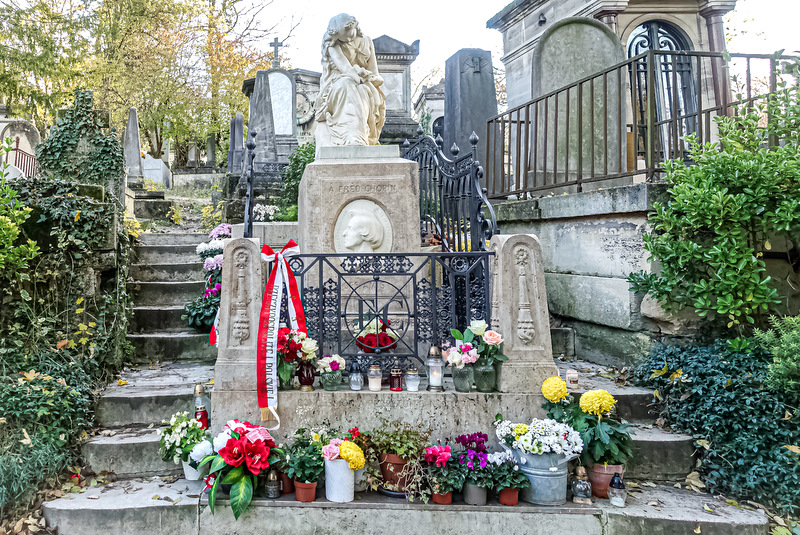
Jan Lisiecki plays Chopin’s Etude Op. 10 No. 3
Although Chopin made a virtuoso entrance into Paris, he did so through the back door. Uninclined to devote himself to large-scale concerts, he mainly displayed his genius in salons, taking advantage of these closed circles to perfect his music. Combining the Italian influences he assiduously cultivated during his Parisian tours with a lyricism prone to nostalgia for his native Poland, it was in Paris that Chopin found the material he needed to confirm his primary vocation: composition. It was also in Paris that Chopin formed a bond with one of the first piano manufacturers, becoming both a true ambassador for the brand and a figure directly associated with the Pleyel sound. Finally, it was as a renowned piano teacher that his name spread through the capital among the elite, and as the lover of George Sand, with whom he formed one of the most famous couples of the Romantic era. A rising star when he arrived in the capital, he died a household name in the City of Light.
Sources and references
CLEMENT Jean-Yves, Chopin et Liszt, la magnificence des contraires, Ed. Alpha
EIGELDINGER Jean-Jacques, Chopin, âme des salons parisiens, Ed. Fayard
EIGELDINGER Jean-Jacques, « 16 février 1848. Le dernier concert de Chopin à Paris »
NIECKS Frederick, Frederick Chopin, as a Man and Musician, vol. 2
NOURNIQUEL Camille, Chopin, Ed. du Seuil
